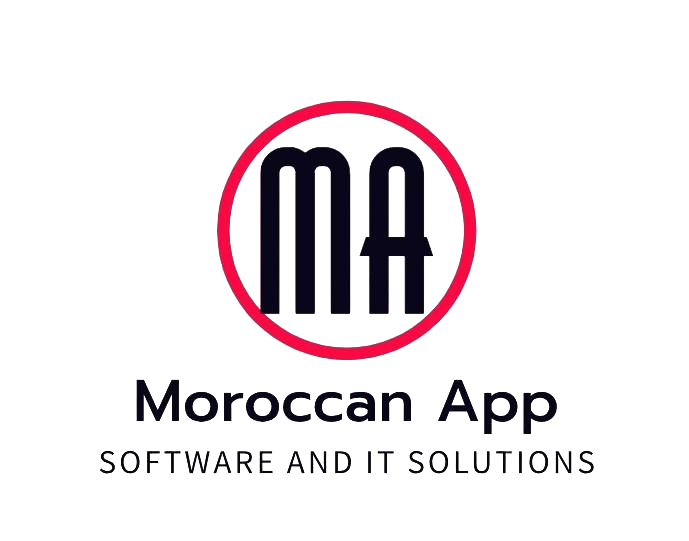- Mon - Sat 8:00 - 17:30, Sunday - CLOSED

How to Manage Your Offices Effectively to Maintain Order
Introduction to Office Management Effective office management is essential to maintaining a productive and orderly work environment. In order to maximize efficiency, each office must be carefully designed and organized. Here are several key aspects to consider for optimal office space management: These elements, when managed well, help create a work environment where employees can be effective, motivated, and engaged. The ultimate goal is to develop a functional and adaptable space, capable of supporting daily activities while promoting a positive and productive work environment.

Why your business in Morocco needs a professional website
The Moroccan economic landscape is changing fast. Having an online presence is crucial to stay competitive. A professional website is more than a showcase. It is a key tool to grow and be seen. Moroccan consumers are increasingly online. They expect a good online experience from companies. A good website helps you stand out, find new customers and keep old ones. Top reasons why your business in Morocco needs a professional website The importance of digital presence for Moroccan companies The digital presence of companies Moroccans is crucial for their growth. Access to new technologies and changes in consumer habits offer new opportunities. This allows companies to stand out in the market. The evolution of Moroccan consumer behavior Moroccan consumers are increasingly connected and mobile. They use social networks and mobile applications to find and buy products. This evolution allows companies to better connect with their customers. New opportunities in the digital market The Moroccan digital market is growing fast, offering new ways to interact with customers. e-commerce platforms, digital marketing campaigns and social media presence help reach more people. This allows companies to stand out. The impact of digital transformation on SMEs The digital transformation has a great impact on Moroccan SMEs. It reduces costs, improves efficiency and brings companies closer to their customers. A good digital strategy helps SMEs compete with large companies. In conclusion, the presence digital is essential for Moroccan businesses. It helps them adapt to trends, meet customer needs and stand out from the competition. The concrete benefits of a professional website for a business in Morocco Today, having a website is crucial for businesses in Morocco. It improves their online visibility and their online reputation. It also opens the door to new professional website benefits. A well-designed website increases your online visibility. You reach more people and tsustainable of your business. Keep a close eye on your site’s data and analytics. This will help you understand your visitors’ behavior. Then adjust your strategies to improve the user experience for Moroccan consumers. Exploit the benefits of digital marketing, such as organic SEO and targeted ads. Social media engagement is also crucial. These methods will increase qualified traffic to your site and convert visitors into customers. FAQ Why is it important for a Moroccan company to have a professional website? A professional website helps companies in Morocco to gain exposure. It builds credibility and increases their chances of growth. In a digital world, having an online presence is crucial to stay competitive. How does digital transformation affect Moroccan SMEs? Digital transformation is changing consumer habits in Morocco. They are looking for more information and buying online. SMEs see opportunities but must adapt by creating a professional website. What are the main advantages of a professional website for a Moroccan company? A professional website brings many advantages. It improves the visibility and credibility of the company. It also increases the chances of selling thanks to a constant online presence. What are the essential elements of a successful professional website in Morocco? A successful website in Morocco must have an adapted design. It must be easy to use and well optimized for search engines. This ensures better online visibility. How to maximize the ROI of a professional website for a Moroccan company? To maximize ROI, companies must use digital marketing. They can focus on local SEO and online advertising. It is also important to track performance to adjust your strategy.

Mobile Application Development in Morocco: Complete Guide
Morocco is a very active market for mobile applications. With more than 36 million people and more than 70% of smartphone users, it offers great potential. This guide walks you through the trends, technologies and best practices for building an app in Morocco. Key takeaways: The current state of the mobile application market in Morocco The mobile applications market in Morocco is growing fast. This shows the growing interest in digital and the needs of businesses. With a connected youth, Morocco is a good place to create innovative applications in different fields. Mobile consumption trends in Morocco People in Morocco spend an average of 3 hours a day on their mobile devices. They use applications a lot. Social networks, messaging, streaming and mobility services are very popular. This shows that people in Morocco are looking for useful and interesting mobile solutions. The sectors with the greatest demand for applications Opportunities in the Moroccan market The mobile applications market in Morocco offers great opportunities. SMEs want to transform themselves digitally. There is a great need for custom apps and mobile solutions for traditional industries. Key Indicators Values Number of smartphone users 22 million Smartphone penetration rate 62% Average number of apps installed 35 Average time spent on apps 3 hours per day These figures show the great potential of the mobile application market in Morocco. They offer great opportunities for entrepreneurs and developers. They can take advantage of the digital transformation underway in Morocco. Technologies and platforms for mobile development Companies in Morocco have several options for developing mobile applications. They can choose between Moroccan iOS development and Moroccan Android development. There are also cross-platforms for a more global approach. Choosing the right technology for mobile application development in Morocco< /strong> is crucial. It requires expertise to get the most out of the different platforms. This helps meet the needs of Moroccan users. Process of creating a mobile application in Morocco Conception and design phase < !-- wp:paragraph --> The first step is to define what the application should do and how it should work. You also need to think about its user interface. This is crucial for the app to be useful and easy to use for people in Morocco. Development and testing Then, the developers working on the application. They are implementing everything that has been planned. Meanwhile, tests are being done to make sure everything is working properly. Deployment and maintenance < p>When the application is ready, it is put online. But the work does not stop there. Regular updates must be made to ensure that it remains compatible with new versions of operating systems. This also allows to correct errors and add new features. Creating a mobile application in Morocco requires a lot of time and resources. But it is essential for mobile development companies that want to stand out in a growing market. Costs and investments for a mobile application Morocco Creating a mobile application in Morocco requires investments. The application development costs change according to several elements. This includes the complexity of the app, the features you want, and whether to go with a custom app or a pre-existing mobile solution. Enterprise mobile solutions are often less expensive up front. But they offer fewer customization options. In contrast, a custom mobile app is more flexible. But its development cost is generally higher. Element Estimated Cost Conception and design 5,000 – 15,000 MAD Development and testing 25,000 – 100,000 MAD Deployment and maintenance 2,000 – 10,000 MAD/year It should be noted that these figures are estimates. They can vary depending on the project and the development team. A detailed feasibility study will give a better idea of the app development costs for your business. “The success of a mobile application is not only measured by its development cost, but also by its ability to meet the needs of your users and generate value for your business.” In summary, investing in a mobile application in Morocco requires careful consideration. You need to choose the business mobile solutions that match your goals and budget. Mobile Development Solutions for Moroccan Businesses Moroccan businesses are looking to grow through digital transformation. Mobile applications are essential in this process. They can be customized or ready-to-use. Custom Applications vs. Pre-Existing Solutions Custom applications adapt perfectly to the needs of the business. But they require more money and time. Pre-existing solutions are more affordable and quicker to implement. However, they may not fit the unique needs of the business. The choice depends on resources, timelines, and feature complexity. Integration with Enterprise Systems Regardless of the choice, integration with existing systems is crucial. An enterprise mobile solution must communicate well with databases and management tools. This improves decision-making, productivity, and user experience. Security and Compliance Security and compliance are essential in the digital transformation in Morocco. SME applications in Morocco must protect data and comply with laws. Support from cybersecurity experts is often necessary. “Mobility has become an essential lever for the digital transformation of Moroccan companies. Choosing the right mobile solutionsis a key success factor.” Choosing your mobile development provider When you think about developing a mobile app for your business in Morocco, choosing the right mobile development provider is crucial. This choice will greatly influence the success of your project. Here are some key points to consider when finding the ideal mobile development agency: Watch the team’s technical skills. Make sure they are well-versed in the latest technologies and frameworks. Look at their experience in developing apps for similar mobile development companies. Their track record shows their expertise. Check out their reputation in the local developers in morocco market. Are they valued by their customers? Check their understanding of your industry and your goals. A good knowledge of your sector is a plus. Assess their ability to communicate and collaborate effectively throughout the project. By taking the time to carefully examine these criteria, you will increase your chances of finding the perfect mobile development provider for your mobile application project in Morocco.

Business management software: Maximize your efficiency in Morocco
The Moroccan market is changing fast. Companies must therefore manage their business better. business management software is crucial for this. They help improve productivity and decision-making. Key takeaways The importance of commercial management software for Moroccan companies Commercial management is a major challenge for companies in Morocco. Business management tools and SME software Morocco are crucial. They help improve business efficiency and achieve long-term success. Current challenges of business management in Morocco Moroccan businesses face several obstacles. Complex regulations, changing exchange rates, and difficulty obtaining reliable information on customers and markets are some examples. Inventory management and orders are also a challenge. Impact on productivity and growth The use of business management software is essential. These tools allow centralizing data, automating processes and optimizing decision-making. This improves productivity and promotes sustainable business growth. Benefits of digitalizing business processes By using business management software tailored to the Moroccan market, companies can overcome these challenges. They can thus improve their competitiveness in the local market. Essential features of a Moroccan sales software Choosing a sales management software in Morocco requires looking at certain key features. These tools help companies automate sales and manage their customers. They also offer advanced ERP and CRM features. Sales automation The best software in Morocco has tools to automate sales. They help manage quotes, invoices, and track orders. They also create detailed reports on sales. Customer Management Good customer relationship management is crucial forcompanies in Morocco. crm software offers tools to segment customers and track interactions. They also help manage opportunities. Integration with ERP solutions The best erp solutions morocco integrate well with business management software. This integration gives an overview of the company. It covers everything from accounting to customer management and sales automation. Functionality Benefit Automatic generation of quotes and invoices Time saving and error reduction Advanced customer contact management Improved customer relations Integration with ERP solutions Overall vision of the company By choosing the right sales management software, businesses improve a lot. They see better sales automation, better customer management. And they integrate better with erp morocco solutions. ERP and CRM solutions adapted to the Moroccan market Companies in Morocco are looking for software that is adapted to their needs. They want ERP and CRM solutions that meet their requirements. These tools must be designed for the local market to be truly useful. Integration of local specificities A good ERP or CRM solution in Morocco must know the market. It must manage orders, track sales and inventory in an appropriate manner. This improves business management and increases productivity. Compatibility with Moroccan regulations Complying with the law is crucial for businesses in Morocco. ERP and CRM solutions must comply with tax and accounting laws. This helps simplify administrative management and invoicing. Customization options available Every business is unique. ERP and CRM solutions must adapt to the needs of each company. This customization allows the software to be used optimally. Functionality Importance for Moroccan companies Order management Essential for monitoring commercial activity and optimizing processes Sales monitoring Allows performance analysis and adjustment of strategies Inventory management Crucial for anticipating needs and avoiding stockouts Invoicing Essential for complying with regulations Moroccan By choosing suitable ERP and CRM solutions, Moroccan companies gain in efficiency. They become more productive thanks to tailor-made tools. Optimizing sales and inventory management The commercial world is changing fast. For companies in Morocco, managing sales and inventory well is essential. ERP integration software offers advanced tools to improve these important tasks. Purchase management is crucial to keep inventory at the right level. These tools provide a clear view ofon orders, replenishments and sales trends. Thus, companies avoid stockouts and unnecessary expenses. Quote management is also simplified by these business software. They allow to create quotes automatically, track them and convert them into orders. This makes companies more responsive and reduces administrative work. In addition, these solutions provide detailed sales dashboards. Managers can see which are the best sellers, the most profitable areas and adjust their strategies. Features Benefits Purchase management Better visibility on stocks, optimal replenishment Quote management Automated sales processes, reduced response times Dashboards and analyses Informed decision-making, identification of the best performing products and areas By using these management solutions, businesses in Morocco become more efficient, responsive and profitable. They improve their sales and supplies. Automation of invoicing processes and quote Automating invoicing and quote processes is essential for Moroccan businesses. Modern business software helps create business documents automatically. It tracks payments and manages currencies and exchange rates. Automatic generation of business documents Businesses can create invoices and quotes automatically. This saves time, reduces errors, and ensures a professional presentation. Payment Tracking and Customer Reminders Inventory management software helps track payments and remind customers. This improves receivables management and customer relations. Currency Management and Exchange Rates Currency and exchange rate management is crucial for international businesses. Modern business software offers tools for conversion and rate tracking. Automating invoicing and quoting processes helps Moroccan businesses. They can focus on their business while improving their productivity and business management. Data analysis and business reporting Businesses in Morocco that use business management software have access to powerful tools. These tools help analyze data and create detailed reports. They help track transactions and identify trends. Accounting software offers customizable dashboards. They provide an overview of business performance. Managers can thus access in-depth analyses on sales and inventory. The digitalization of businesses in Morocco makes data collection and exploitation easier. Integrated management software automates the generation of reports. This provides better visibility into the company’s activities. This information is crucial for steering the business strategy and making informed decisions. FAQ What is a business management software and how is it useful for Moroccan businesses? A business management software helps improve sales and customer management. It makes operations more efficient. Companies in Morocco can thus better manage their time and make better decisions. What are the main challenges of business management in Morocco and how can software address them? Challenges in Morocco include manual management and lack

Invoicing and inventory management software: Guide for SMEs in Morocco
Small and medium-sized enterprises (SMEs) are essential in the Moroccan economy. They represent the majority of businesses. To remain competitive, managing invoicing and inventory well is crucial. This guide will help you choose the right software for your needs. It is designed specifically for SMEs in Morocco. Key Findings The importance of integrated management for Moroccan SMEs Moroccan SMEs face daily challenges, especially in invoicing and inventory management. Effective management of these essential processes can greatly improve their business performance. The daily challenges of Moroccan businesses Many Moroccan SMEs use manual and disorganized methods for invoicing and inventory tracking. These methods can lead to errors, delays and wasted time. They can also affect customer satisfaction and business productivity. Impact on Business Performance Poor invoicing and inventory management can seriously impact business performance. Issues like unfulfilled orders, stockouts, and inaccurate invoices can lead to lost revenue. They can also decrease customer confidence. Benefits of digitalizing processes Using integrated management software allows Moroccan SMEs to digitalize their business processes. This helps to automate invoicing and manage inventory in real time. Inventory management and Sales tracking improve, which improves overall operational performance. By using the right SME tools, Moroccan companies can overcome these challenges. This can be a real competitive advantage for them. Inventory billing software Morocco: Solutions available on the market Morocco offers a wide range of business management software, ERP software and integrated billing solutions for SMEs. These digital tools simplify invoice and inventory management. They also improve the productivity and profitability of small and medium-sized businesses. Here are some of the main solutions available in Morocco: Each of these solutions has its own features, pricing and integration levels. It is crucial for Moroccan SMEs to understand their needs. This way, they can choose the integrated invoicing solution that best suits their business. Software Key features Pricing Benefits for SMEs Odoo Invoicing, inventory management, accounting, CRM Starting at €25/month Modular, scalable, and 100% cloud platform EBP Invoicing, quotes, order tracking, inventory management Starting at 49€/month Solutions specially designed for Moroccan SMEs Sage Invoicing, accounting, inventory management, payroll Starting at 39€/month Close integration with existing accounting systems These business management software, ERP software and integrated invoicing solutions provide Moroccan SMEs with powerful tools. They help optimize administrative and commercial processes. Choosing the right solution depends on the specific needs of each company, in terms of features, budget and integration with existing systems. Criteria for choosing management software for your business When looking for SME accounting software in Morocco, you have to choose wisely. It is crucial to consider several key criteria. This will help you find the best software for your purchasing management and electronic invoicing. Essential features to consider Start by listing the features that are important to your business. Here are some points not to be missed: Budget and ROI The cost of software is a key element, especially for SMEs in Morocco. Think about the long-term return on investment. Consider the productivity and efficiency gains that the software can bring. Compatibility with Moroccan legislation Finally, make sure that the software is compatible with Moroccan legislation. This concerns electronic invoicing and purchasing management. This protects you against the risks of non-compliance. “Choosing the right management software is essential to optimize your processes and boostthe performance of your Moroccan SME.” By considering these criteria, you will find the SME accounting software perfect for your business. Cloud vs. On-Premises Solutions: Comparative Analysis Choosing an inventory management and invoicing software is crucial for your business. The decision between a cloud solution and an on-premises solution is an important one. Each option has its pros and cons to consider depending on your needs. Benefits of Cloud Solutions Benefits of On-Premises Solutions The choice between a cloud solution and an on-premises solution depends on your priorities. Analyze your needs carefully to choose the ideal SME cloud solution for your business. “Integrated management of invoicing and inventory processes is essential for Moroccan SMEs in a context of increasing digitalization.” Advanced features of modern management software Modern management software brings great changes. It helps Moroccan SMEs to better manage their work. Here are three key points that make things more efficient. Automating invoicing processes Automating order management saves time. It also reduces errors. The software automatically creates invoices and sends them to customers. There is also real-time inventory tracking. This makes supply chain management and product management easier. Real-time inventory management The inventory tracking features are very advanced. They allow you to know the status of your inventory at any time. This avoids stock issues and improves order management. Automatic alerts and detailed reports help to react quickly to changes in demand. Reporting and statistical analysis Modern software has reporting and analysis tools. They provide key information on the performance of companies. Custom dashboards and predictive analytics help make better decisions. This improves order management and supply chain management. Feature Benefits Automated invoicing – Save time– Reduce errors– Real-time inventory tracking Real-time inventory management real – Avoid stock shortages– Optimize order management– Respond quickly to fluctuations Reporting and statistical analysis – Obtain essential insights– Make informed decisions– Improve product management “The advanced features of modern management software are a real asset for Moroccan SMEs that want to gain in efficiency and competitiveness.” Integration with existing accounting systems Integrating new invoicing and inventory management software with your accounting systems is crucial. It gives you a holistic view of your finances. This helps you make better decisions and improve the efficiency of your business. Modern invoice management software and inventory management tools integrate well with accounting software. They avoid errors due to manual entries. You will have a financial dashboard updated in real time. When choosing invoicing and inventory management software, make sure it integrates well with Moroccan accounting software. This compatibility makes it easier to set up and manage your finances. FAQ What are the main benefits of invoicing and inventory management software for Moroccan SMEs? Invoicing and inventory management software offers several advantages. It automates processes and

How to Choose the Ideal Inventory Software for Your Business in Morocco
Introduction Choosing the ideal inventory software is a crucial step for businesses operating in Morocco, where effective inventory management can determine the success and profitability of an organization. With so many options available on the market, finding the solution that best fits your business’s specific needs can seem like a daunting task. Business Needs Before you begin your software search, it is essential to understand your business’ specific needs. Here are some things to consider: Essential features In order to facilitate inventory management and optimize operations, the inventory software must include certain essential features. Among these: Compliance and Security In Morocco, it is also essential to choose software that complies with local accounting and tax compliance regulations. In addition, data security must be a priority, with measures to protect against cyberattacks and unauthorized access. Essential criteria such as ease of use, total cost of ownership, and technical support offered by the software publisher are also decisive in the final choice. By evaluating these elements in depth, Moroccan companies can select inventory software that is not only adapted to their current needs but also scalable to meet their future logistics challenges. 1. The Importance of Inventory Software for Businesses in Morocco Inventory management is a crucial task for Moroccan businesses of all sizes and industries. An effective inventory software can transform the way a business manages its inventory, providing several key benefits: Inventory Optimization A inventory software allows you to monitor inventory levels in real time. This helps avoid overstocks and stockouts, by maintaining an optimal balance. Companies can thus reduce storage costs and maximize product availability. Improved Accuracy Manual errors are common when managing inventory by paper or spreadsheets. An automated inventory software significantly reduces these errors through accurate data entry and real-time updates. Save time and increase efficiency Automating inventory processes saves time. Repetitive tasks, such as ordering and receiving, are simplified. This frees up time to focus on strategic activities and enables better productivity. Data tracking and analysis inventory software provides robust reporting features. They allow businesses to track sales trends, identify fast-moving and slow-moving products, and make informed decisions based on accurate data. Integration with other systems A good inventory software can integrate with other business systems like accounting, order management, and point-of-sale (POS) systems. This ensures cohesion and fluidity of operations, eliminating duplication and inconsistencies. Improved customer service Having effective inventory management translates into better customer satisfaction. Businesses can ensure product availability, fulfill orders faster, and minimize delivery delays. Smooth inventory management helps build customer loyalty. Regulatory Compliance Businesses in Morocco must comply with various regulations regarding storage and inventory. Inventory software helps maintain compliant management practices, facilitating audits and inspections. Cost Reduction With accurate inventory management, businesses can identify inefficiencies and optimize their storage processes. This leads to reduced operational costs and more efficient use of resources. Adopting inventory software therefore allows Moroccan businesses to remain competitive in a dynamic market. Automation and optimization of inventory management are key success factors in today’s business world. 2. Understand the specific needs of your business To choose the ideal inventory software in Morocco, it is crucial to first understand the specific needs of your business. Each business has its own characteristics and requirements, here are some essential points to consider: Understanding these specific needs helps identify the essential features of the ideal inventory software, ensuring process optimization and better resource management. 3. Types of inventory software available There are several types of inventory software available on the market, each offering specific features tailored to various organizational needs. Here’s an overview of the main types of inventory software available: 1. Standalone Inventory Software 2. ERP with inventory module 3. Cloud-based inventory software 4. Specialized Software 5. Inventory Management Mobile Apps 6. Free or Open Source Software 7. Integrated solutions with e-commerce platforms 4. Essential Features of a Good Inventory Software A good inventory software must have a number of essential features to meet the varied needs of businesses in Morocco. These features help manage inventory efficiently and facilitate business operations. Inventory software that meets these essential criteria will allow businesses in Morocco to manage their operations efficiently, while reducing errors and optimizing resources. 5. Integration with other systems When choosing inventory software for your business in Morocco, integration with other existing systems is of paramount importance. An inventory management solution must be able to communicate seamlessly with your current systems to ensure efficient and seamless management. Importance of Integration Integrating with other software helps to: Types of systems to integrate Integration Methods Things to Consider When evaluating your inventory software’s integration with other systems, consider : Thus, the ability of inventory software to integrate with other systems is essential to ensure efficient management of your business. 6. Data security and backup When choosing a inventory software for a business in Morocco, data security and backup must be priority criteria. Inadequate data management can lead to significant financial losses and damage the company’s reputation.list-item –> Tutorials and Documentation: A variety of educational materials, such as video tutorials, user manuals, and FAQs, make the software easy to understand. Access to these resources is essential to resolve minor issues quickly. Staff training is a crucial part of ensuring that all employees use the new system properly. Here are some recommendations: Initial Training Sessions: Provide comprehensive training sessions during software implementation. It helps to have experienced trainers to guide the process. Continuing Training: Provide regular training to keep skills up to date, especially after major software updates. Using Super Users: Identify and train super users within the organization who can serve as references for their colleagues. User Feedback: Encourage users to provide feedback to improve future training sessions and adjust software features. By focusing on ease of use and proper staff training, a business can take full advantage of its inventory software, enabling more efficient and accurate inventory management. 8. Cost and ROI When selecting inventory software for a business in Morocco, looking at the total cost and return on investment

Accounting software in Morocco: The essential tools
Introduction to Accounting Software in Morocco In Morocco, the accounting management of companies is facilitated by the use of specialized accounting software. These digital tools offer a multitude of features aimed at optimizing and simplifying the maintenance of accounts. Choosing the right accounting software can help businesses manage their finances more efficiently and in compliance with local regulations. Why use accounting software? Accounting software allows you to: Key Features A good accounting software must include several essential features: Benefits for Moroccan companies Moroccan companies, whether small, medium or large, can benefit substantial benefits of using accounting software: Note: It is crucial for companies to choose software that is adapted to their specific needs and their sector of activity. The use of accounting software in Morocco is a strategic solution to improve financial management and support business growth. Advanced features and significant benefits not only ensure compliance and accuracy, but also enable informed decisions based on financially sound data. The Importance of Accounting Software for Moroccan Businesses Accounting software is a crucial tool for businesses operating in the Moroccan economic landscape. Due to the complexity of tax regulations and exlocal accounting agencies, the adoption of efficient accounting software becomes essential. These softwares offer a series of advantages to optimize financial operations within Moroccan companies. Automation of Accounting Tasks The automation of repetitive and tedious tasks is one of the main advantages of accounting software. This includes: Regulatory Compliance Moroccan companies must comply with tax and accounting standards set by local authorities. A good accounting software ensures: Time Saving and Efficiency By centralizing financial data, accounting software allows for significant time savings and improves team efficiency: Improved Decision Making Having accurate and real-time financial reports helps managers make informed decisions. The analytical features of accounting software allow you to: Data Security The integrity and security of financial data are essential. A robust accounting software offers: In In short, the adoption of accounting software adapted to the specificities of the Moroccan market is essential for companies aiming to improve their financial management and ensure their sustainable growth. Essential Features of Accounting Software accounting software plays a decisive role in the financial management of companies, by simplifying accounting tasks and ensuring compliance with regulations. For accounting software to be effective and essential, it must have certain essential features. Thus, when a company in Morocco evaluates various accounting software, it is crucial that it takes into account these essential characteristics in order to choose a tool that is adapted to its specific needs and capable of ensuring optimal accounting management. Comparison of the Main Accounting Software in Morocco The Moroccan accounting market has experienced a significant evolution in recent years thanks to the introduction of various efficient accounting software. These tools are designed to meet the needs of businesses of different sizes and industries. Here is a comparison of the main accounting software available in Morocco:

How to Use RFID in Morocco: Complete Guide
RFID technology is rapidly transforming the business landscape in Morocco. Moroccan companies are adopting this radio frequency identification solution to improve their operational efficiency. This technology is becoming a key element of digital transformation in several sectors, from agriculture to logistics. This comprehensive guide examines the practical applications of RFID in Morocco and its benefits for businesses. Readers will discover the steps to implement an RFID system, best practices for inventory management, and solutions tailored to Moroccan SMEs. The article also addresses the current challenges and future prospects of this technology in the Moroccan context. Understanding RFID Technology Radio Frequency Identification (RFID) represents a major advance in the field of automatic identification. This technology uses radio waves to store and retrieve data remotely, offering remarkable possibilities for managing and tracking objects. The RFID system is based on two essential components: tags (or labels) and readers. RFID tags, consisting of an electronic chip and an antenna, can store up to 64,000 bits of data, allowing precise and detailed identification of objects. There are three main types of RFID tags: RFID technology is distinguished by its ability to read hundreds of tags simultaneously per second, without requiring a direct line of sight between the reader and the tag. Data can not only be read but also modified or rewritten, providing exceptional flexibility in information management. A complete RFID system also integrates a middleware that processes the collected data and transmits it to the company’s information system. This architecture allows for automated and efficient data management, contributing to improved traceability and inventory management. RFID Applications in Morocco In Morocco, RFID technology is revolutionizing many sectors of activity, offering innovative solutions for operations management. In the supply chain field, this technology enables real-time visibility and efficiency, eliminating errors throughout production, warehousing and distribution operations. The main applications of RFID in Morocco include: In the industrial sector, RFID allows companies to track their products at every stage of production and marketing. RFID tags offer significantly greater storage capacity than traditional barcodes, allowing to process up to 100 tags per second. The technology is also transforming retail. Moroccan retailers are using RFID to automate their inventories and reduce stockouts. RFID gates installed at the entrance and exit of stores provide effective protection against theft. This solution not only optimizes inventory management but also significantly improves the customer purchasing experience. In logistics, Moroccan companies are seeing a significant improvement in their operational efficiency. The technology makes it possible to synchronize physical flows with information flows, providing complete traceability and better anticipation of supply chain malfunctions. Implementation of an RFID system Implementing an RFID system requires a methodical and well-planned approach to ensure its success. Companies should follow a structured process that begins with a thorough pre-study phase to choose the RFID technology that best suits their specific needs. Essential implementation steps include: To ensure successful integration, several critical factors must be considered: End-user involvement is crucial, because the best technological system only works if users comply with its operating mode. Success is based on the combination of three fundamental parameters: the choice of the appropriate RFID standard, the establishment of a precise operating mode, and effective change management. The reliability rate of the system can be optimized thanks to a well-defined and integrated operating mode. Companies must also plan the modification of the activity’s IT management system and promote the rapprochement of several actors around the RFID project. Challenges and future prospects of RFID in Morocco Despite its transformative potential, the deployment of RFID in Morocco faces several significant challenges. The implementation cost remains a major obstacle, with RFID tags costing between ten cents and one euro, five to ten times more expensive than traditional barcodes. Key technical challenges include: Nevertheless, the future prospects are promising. The market for IT equipment for logistics in Morocco is experiencing an impressive growth of 30% to 40% per year. The country’s strategic geographical position, including its proximity to the Eurozone, offers significant opportunities for the expansion of RFID technology. Environmental ambitions are also supporting RFID adoption, with national targets to reduce CO2 emissions by 35%. This technology is perfectly aligned with the national strategy for the development of logistics competitiveness, which emphasizes modernization and operational efficiency. The Tanger-Med port plays a crucial role in this transformation, serving as a strategic hub for the flow of goods to Europe, America, West Africa and Asia. This infrastructure, combined with the flexibility of the Moroccan workforce, positions Morocco as a key player in the adoption of RFID technologies on a regional scale. Conclusion RFID technology marks a decisive step in the modernization of Moroccan companies. Radio frequency identification solutions demonstrate their added value across various sectors, from inventory management to product security. The positive results observed in companies that have adopted this technology confirm its essential role in improving productivity and reducing operational costs. Morocco is positioning itself as a major player in the adoption of RFID technologies in Africa, driven by its strategic geographical location and modern infrastructure. Despite the initial implementation challenges, future prospects remain promising, supported by the continued growth of the logistics market and government initiatives in favor of digital transformation. Moroccan companies that are investing in RFID today are giving themselves the means to effectively meet the growing demands for traceability and operational efficiency. FAQs Q: How can I use an RFID card?A: To use an RFID card, simply pass it in front of an RFID reader. This contactless system allows, for example, to recharge an electric vehicle while securing access and payment. Q: What are the steps to activate RFID on a device?A: To activate RFID, you must first activate the network on a smartphone via the Settings/Networks menus. Then, install an application like NFC Tools on Android, bring the smartphone within 10 cm of the RFID tag and program the desired action. Q: How does RFID access work?A: The RFIDpassive, which does not have a battery, works in read-only mode. The reader sends an electromagnetic signal to

Marketing software in Morocco: Essential tools for SMEs
Introduction Marketing software is now a fundamental pillar in the digital transformation of Moroccan companies. These tools constitute a set of IT solutions dedicated to optimizing business processes, from sales management to customer relations. For Moroccan SMEs, this software has become essential allies in an increasingly competitive market. They allow you to: The digitalization of the commercial sector in Morocco is experiencing spectacular growth, driven by the emergence of solutions adapted to the specific needs of local companies. SMEs that adopt these tools gain a significant competitive advantage, with an average increase of 30% in their commercial productivity. This article presents you with a complete overview of the marketing software available in Morocco. You will discover the essential features, the most efficient solutions and the implementation strategies to maximize your commercial potential. Understanding marketing software in Morocco marketing software are digital solutions dedicated to optimizing business processes. These tools constitute a strategic lever for Moroccan SMEs wishing to automate their daily operations. Definition and scope A marketing software represents an integrated platform that centralizes: Key features Marketing solutions in Morocco are distinguished by their multifunctional capabilities : Advantages for SMEs Adopting marketing software offers tangible benefits: Moroccan SMEs that integrate these digital solutions note a significant improvement in their operational efficiency. The digitalization of business processes allows for better organization, smooth communication between teams and increased customer satisfaction. The essential features of business management software A high-performance business management software is built around three major features that transform the way Moroccan SMEs manage their daily operations. Monitoring sales and purchases Effective sales management requires precise and reliable tools. sales management software allows you to: Smart inventory management Inventory management is a major challenge for SMEs. Advanced features include: Billing and regulations Modern invoicing tools simplify financial management: Moroccan SMEs that adopt these software solutions see a significant reduction in management errors and an improvement in their productivity. These tools are adapted to different sectors of activity and Comparative analysis of the main marketing tools in Morocco The Moroccan market offers a varied range of commercial management software adapted to the specific needs of SMEs. A detailed analysis of the available solutions reveals significant differences in terms of functionality and adaptability. Essential comparison criteria: User interface and ergonomics Advanced features Adaptability to local needs Technical support and training Value for money Case study: Gestimum Gestimum stands out for its versatility and its adaptation to the Moroccan market. Its intuitive interface allows for quick handling, even for users unfamiliar with IT tools. Strong points of the Gestimum interface: Smooth navigation between modules Customizable dashboards Quick access to the main functions Adaptation to Moroccan accounting standards Gestimum’s customization extends to several levels: Creation of custom fields Adaptation of commercial documents Configuration of workflows according to internal processes Configuration of access rights by user Key features: Automatic replenishment Intelligent calculation of stock requirements Automatic generation of supplier orders Management of alert thresholds Optimization of storage costs Reminder management Automated follow-up of unpaid debts Models of customizable reminder Historydetailed action plan Planning of reminders according to different levels Moroccan SMEs using Gestimum report a significant improvement in their operational efficiency. The Case study: GECIMMO GECIMMO, developed by Easy System 3000, is establishing itself as a benchmark solution for commercial management in the Moroccan real estate sector. This software meets the specific needs of real estate developers with tailored features: Real estate project management Detailed tracking of lots and units Real-time sales status Reservations and contracts management Decision-making tools Customizable dashboards Key performance indicators Market Trend Analysis Advanced Features Monitoring of collections and deadlines Integrated document management Multilingual interface (Arabic, English) GECIMMO stands out for its ability to generate detailed reports on the progress of projects. You can access an overview of your real estate activities through interactive graphs and real-time statistics. The software also includes an automatic notification system for monitoring payments and important deadlines. L’importance of CRM for Moroccan SMEs Customer relationship management (CRM) systems are transforming the way Moroccan SMEs interact with their customers. These tools are becoming indispensable to maintain a competitive position in today’s market. A powerful CRM allows SMEs to: Centralize customer data in a single database Track the complete history of interactions Automate repetitive tasks Analyze purchasing behavior Personalize communications The digitalization of business processes generates tangible results: companies using a CRM see an average increase of 25% in their turnover. Improving customer service Integrating a CRM radically transforms the quality of customer service: Increased responsiveness: instant access to customer information Personalized tracking: detailed history of interactions Anticipation of needs: predictive analysis of behavior Targeted Communication: Precise Customer Segmentation Popular CRM tools in Morocco The Moroccan market offers several CRM solutions adapted to local needs: Sage Maroc CRM Interface in French and Arabic Compliance with Moroccan regulations Specific modules for managing quotes and invoices Local technical support Microsoft Dynamics 365 Full integration with the Office suite Secure cloud solutions Advanced customization Detailed business analyses Sage Maroc solutions stand out for their adaptation to the local context: Multi-currency management with a focus on the Moroccan dirham Document templates that comply with Moroccan standards Tax reports adapted to local legislation In addition to these solutions, it is also essential to integrate an efficient commercial management system that complements the features of a CRM. This will allow better management of sales, inventory and purchases, while ensuring perfect synergy between these different aspects of the business. L’impact du marketing digital sur les PME au Maroc Digital marketing is radically transforming the Moroccan business landscape. SMEs are massively adopting digital solutions to remain competitive in a constantly changing market. The digital transformation of Moroccan SMEs Moroccan companies are increasingly integrating digital tools into their strategy: Social networks: 78% of SMEs use Facebook and Instagram for their promotion Websites: 45% increase in the creation of e-commerce sites in 2022 Mobile applications: 60% of SMEs are developing their presence on mobile The essential digital tools The digital solutions favored by Moroccan SMEs : CRM digital

Physical and Digital Archive Management: A Complete Guide for Businesses
Introduction Archive management represents a fundamental pillar in the organizational strategy of modern companies. In the digital age, the coexistence of physical and electronic documents requires a structured and methodical approach to ensure effective document management. This comprehensive guide is for companies that want to: The management of physical and digital archives encompasses several crucial aspects: Our guide will help you implement an archiving strategy that is adapted to contemporary challenges. You will discover the best practices for effectively managing your archives, whether on paper or in digital format. This integrated approach optimizes resources while ensuring the preservation of your information capital. 1. Understanding the importance of archiving for businesses Archiving represents a fundamental pillar in the organizational structure of modern businesses. This practice goes beyond the simple conservation of documents to become a real strategic tool. Legal compliance: an essential obligation Security of sensitive data Protecting confidential information requires a structured approach: Daily operational efficiency Optimized document management directly impacts the company’s performance: Companies that invest in suitable archiving solutions see a significant improvement in their performance. A well-designed archiving system helps reduce legal risks, protect information assets and optimise internal processes. 2. Types of archives in companies and their specific management Effective archive management is based on a thorough understanding of the different categories of documents and their life cycle within the company. Archives fall into three distinct categories, each requiring a tailored management approach. Current Archives: Active Document Management for Quick Access Current archives represent documents used daily in the operations of the business. These documents require immediate accessibility and rigorous organization. Main characteristics of current archives: Recommended management methods: Practical organization: Managing current archives requires a balance between accessibility and security. Documents must be easily accessible to authorized employees while remaining protected from unauthorized access. Tools and solutions: Intermediate archives: optimizing storage space with less frequently used documents Intermediate archives represent a specific category of documents whose consultation is becoming less regular. This intermediate phase requires an adapted storage strategy to optimize space while maintaining document accessibility. Characteristics of intermediate archives: Optimized storage solutions: Efficient management of intermediate archives is based on a three-pronged strategy: Thematic classification: The The establishment of a unified classification plan makes it possible to establish a standardized nomenclature. This standardization facilitates: Digital Security Sensitive Data Encryption< /li> Two-Factor Authentication Regular backups on redundant servers Document access logging< /li> Internal security protocols Assigning authorization levels to employees Traceability of consultations and modifications Mandatory “clean desk” policy Procedures for secure document destruction The ISO 15489 standard establishes precise guidelines for the implementation of a reliable document system. Companies must adapt these recommendations to their specific needs while respecting the regulatory framework. An effective storage strategy is based on: Regular risk assessment Updating security systems Continuing staff training in best practices The periodic audit of protection procedures The implementation of a hybrid storage solution makes it possible to combine the advantages of physical and digital archiving. This approach ensures optimal protection of sensitive data while facilitating their accessibility to authorized users. It is also crucial to integrate an effective fight against cybercrime into these strategies, because physical and digital security is not always enough in the face of growing threats in the virtual world. 4. Digitization and hybridization in modern archive management: towards a successful paperless transition! The digital transformation of archives represents a major development for modern businesses. This change requires a strategic and methodical approach to ensure an effective transition. Key steps in digitization: Audit of existing documents Selection of priority documents Definition of digitization formats Implementation of a system of backup Creating validation protocols Hybrid solutions: a smart compromise Adopting a hybrid system allows for a gradual and secure transition. This approach combines: The preservation of essential original documents The digitization of frequently consulted documents The electronic archiving of new documents The essential tools for hybrid management The success of this transformation depends on the use of suitable tools: High-definition professional scanners Optical recognition software (OCR) Electronic document management systems (EDM) Secure cloud storage solutions Good digitization practices The quality of the digitization directly impacts the efficiency of the system: Respect image quality standards Systematically index documents Check the integrity of the digitized files Put in place quality control procedures Ensure the traceability of operations This digital transformation requires a significant initial investment, but generates substantial savings in the long term by reducing physical storage costs and optimizing accessibilitydocument management. 5. Strategic benefits of good long-term document management for contemporary businesses Effective document management is a real performance lever for modern businesses. Tangible benefits are evident in several key aspects: Financial optimization Reduced physical storage costs Reduced costs related to the maintenance of paper archives Savings on supplies and archiving equipment Lower labor costs dedicated to document management Operational performance Acceleration of document research processes Reduced processing time for customer requests Improved collaboration between departments Increased productivity thanks to instant access to information Customer satisfaction reinforced Faster responses to documentation requests Personalized customer service thanks to accessible history Optimal traceability of exchanges and transactions Efficient dispute resolution thanks to documentary evidence Competitive advantage Accelerated decision-making thanks to organized data Improved analysis capacity for historical trends Increased responsiveness to market opportunities Enhanced protection of the company’s information assets The valorization of archived data allows companies to fully exploit their information capital, thus creating a virtuous circle of continuous improvement of performance. 6. Staff awareness and ongoing training as a key lever for effective archiving Training staff in best archiving practices is a strategic investment for your business. An effective training program is structured around several axes: Introduction sessions for new employees Introduction to archiving tools Specific filing procedures File naming rules Regular practical workshops Sorting exercises Documentary research simulations Real-life case studies To actively involve your employees, adopt these strategies: Designate “archiving ambassadors” in each department Create accessible visual guides on the intranet Organize monthly document organization challenges Set up a system for recognizing good practices Internal communication plays a central

Office management software for better order and efficiency
Introduction In the modern professional world, office management software is radically transforming the way we organize our workspace. These digital tools are now an essential element for companies looking to optimize their operational efficiency. A well-organized office is much more than just an aesthetic pleasure. Research shows that a structured work environment directly impacts team productivity. office management solutions allow you to: Disorganization generates stress and frustration, creating a vicious circle that negatively affects individual and collective performance. office productivity software provides a concrete response to these challenges by structuring workflows and simplifying document management. In this article, you will discover how these digital tools can transform your workspace. We will explore the most effective solutions to create a professional environment where order and efficiency reign, essential to the success of your business. The negative impact of disorder on productivity Disorder in the office represents a major challenge for companies, directly impacting the performance of teams. A study by the National Association of Professional Organizations found that employees waste an average of 4.3 hours per week searching for misplaced documents, which adds up to more than a workday per month. The cognitive overload generated by a cluttered environment manifests itself in several ways: The direct consequences on productivity are measurable: A concrete example: in a service company, employees spend an average of 28 minutes per day searching for information scattered across different media (emails, physical files, notes). This disorganization costs the company nearly 89 hours of productivity per employee per year. Disorganization also affects the quality of work: Practical methods to improve order in the office 1. The 5S method: a pillar of effective organization The 5S method, derived from Japanese management practices, represents a systematic approach to transforming your workspace into an orderly and productive environment. This method is structured around five essential steps: Seiri (Sort) Seiton (Ranger) Seiso (Clean) Seiketsu (Standardize) Shitsuke (Follow) Concrete applications of the 5S method A financial services company applied the 5S method to its filing system: 2. Digital tools for optimized document management The centralization of files represents a major challenge for modern companies. Effective document management can reduce the time spent searching for information by 30% and increase team productivity. Google Drive: the ultimate collaborative solution Microsoft SharePoint: the complete professional platform Choice criteria between the two platforms Implementing a document management solution requires an in-depth analysis phase of your organization’s specific needs. Team adoption largely depends on the quality of the training and support offered. Digital transformation: an essential ally for office efficiency Digital transformation redefines traditional administrative processes by adapting them to the demands of the modern professional world. Digital software is naturally integrated into the daily life of companies, creating an ecosystem where information circulates smoothly and instantly. Automation of administrative tasks Digital solutions eliminate time-consuming manual tasks: Concrete gains for the company Digitizing administrative processes generates measurable benefits: L’intelligence artificielle au service de la productivity Modern tools integrate AI features that optimize daily work: Digital solutions are also transforming collaboration between teams. Collaborative work platforms allow employees to share, edit and comment on documents in real time, creating a dynamic and productive work environment. Data security is improved thanks to automatic backup systems and Key features to look for in an effective office management software 1. Electronic document management (EDM): much more than simple digital archiving EDM is the heart of a high-performance office management system. Effective software should integrate these essential features: Intelligent storage and indexing Security and confidentiality Collaboration and sharing Integration and compatibility The power of a modern EDM lies in its ability to centralize information while making it securely accessible. Companies using a high-performance EDM see a 30% reduction in the time spent searching for documents and a 50% reduction in errors related to document management. Intelligent automation A high-performance EDM system radically transforms document management by providing a clear and organized view of all resources. 2. Rigorous monitoring of correspondence associated with fine task management Monitoring correspondence is a major challenge in the daily management of a company. Task management tools integrated into modern office software are radically transforming this management. Essential features for optimal monitoring: Solutions like Asana or Monday.com excel at coordinating match-related tasks. These platforms allow you to: Implementing a rigorous tracking system significantly reduces common errors: Task management tools integrate collaboration features that make tracking correspondence a seamless process. Teams can share feedback, assign responsibilities, and track progress from a single interface. Automated reminders and notifications ensure that no important correspondence escapes your attention. Smart tagging and categorization systems make it easy to find any document or past exchange instantly. Popular Apps That Help Workplace Efficiency 1. Trello: A Visual Tool for Simplified Project Management Trello transforms project management into an intuitive visual experience thanks to its system of boards, lists and cards. This digital Kanban approach allows teams to instantly visualize the progress of their projects. Trello’s key features: Power-ups to enrich the experience: Butler Automations: Butler Automation Rules allow you to: The free version of Trello already offers many possibilities for small teams. Business Class and Enterprise versions unlock advanced features like calendar view, unlimited boards, and additional customization options. 2. Slack: Revolutionize Internal Communication with a Single Click Slack is radically changing the way teams communicate within companies. This professional messaging platform offers a structured digital workspace where conversations are naturally organized by thematic channels. Slack’s flagship features: Teams that adopt Slack see a significant reduction in internal emails and unproductive meetings. The platform keeps a written record of important decisions and makes it easier to onboard new employees who can view the history of exchanges. Slack’s intuitive interface adapts to the specific needs of each organization. Customizable notifications allow you to stay informed of important conversations without being overwhelmed. Emojis and GIFs add a touch of lightness to professional conversations, strengthening team cohesion. Companies using Slack report a 48.6% improvement in their internal communication and a 32.4% reduction in the time spent in meetings.

Developing a website in Morocco: Tips and key steps
Introduction Creating a website has become essential to succeed in the Moroccan digital landscape. In a country where over 84% of the population uses the Internet, your online presence determines your visibility and credibility. A successful website fulfills several essential objectives: The success of your web project depends on a methodical and structured approach. Here are the key steps we will explore: These fundamentals will guide you in creating a high-performance website, adapted to the expectations of Moroccan users and aligned with your business objectives. 1. Defining the objective of the site and knowing its target audience Creating a high-performance website in Morocco begins with a precise definition of your objectives. The most popular websites in Morocco fall into three main categories: Defining your main goal directly influences: To identify your target audience, analyze these elements keys: An effective website meets the expectations of its visitors. Take the time to study your direct competitors and analyze their strengths and weaknesses to stand out on the Moroccan market. 2. Choosing a hosting that fits your needs The choice of web hosting directly influences the performance of your site. Here are the main options available in Morocco: Shared hosting VPS (Virtual Private Server) hosting Dedicated hosting Cloud hosting To choose your hosting, evaluate these criteria: Moroccan hosting providers offer specific advantages: support in Darija, payment in dirhams, local servers for better latency. Choose a certified hosting provider with an established presence in the national market. 3. Register a powerful domain name Choosing a domain name represents your online identity. Here are the essential criteria for selecting an effective domain name: Selection criteria: Registration process: Recommended registrars for the Moroccan market include INWI, Genious Communications, and O2Switch. These providers offer a French interface and local customer support. To protect your brand, also register variations of your domain name with different extensions (.com, .net). 4. Design a professional website with a CMS like WordPress The design of a professional website is based on two essential pillars: user experience and ease of management. A neat design and intuitive navigation create a positive first impression on your visitors. The key elements of a successful design: WordPress is the ideal CMS to create your professional website. This platform equips more than 40% of sites in the world, offering many advantages: The advantages of WordPress: Customizing your WordPress site involves choosing a theme that is adapted to your sector of activity. Page builders like Elementor or Divi allow you to create professional layouts without extensive technical knowledge. Essential plugins enhance your site’s functionality: SEO optimization, security, backup, contact forms. Choose only the extensions necessary to maintain optimal performance of your site. 5. Optimize your site for SEO and digital marketing SEO optimization of your website is crucial for its visibility on search engines in Morocco. A well-thought-out SEO strategy helps attract qualified traffic and increase your online visibility. Fundamental SEO Strategies Content optimized for the Moroccan market Digital Marketing Strategy Technical Optimization Implementing a local SEO strategy allows you to stand out on the Moroccan market. The combined use of social networks and optimization techniques creates a robust and coherent digital presence. 6. Manage logistics and customer service for e-commerce sites The success of an e-commerce site is based on impeccable logistics management and efficient customer service. A bad delivery experience or poor customer support can quickly tarnish your online reputation. Optimization of inventory management Delivery solutions adapted to the Moroccan market Customer service responsive and multichannel Customer satisfaction also requires proactive communication. Inform your customers at each stage of the ordering and delivery process. An automatic SMS or email when shipping or a possible delay helps maintain trust. 7. Monitor your site’s performance and continuously adjust Analyzing your website’s performance is a crucial step for its success. Google Analytics is the essential tool for tracking your key metrics: Setting up event tracking allows you to understand user behavior: The data collected guides your optimization decisions. Regular analysis helps you: The heat tools mapping like Hotjar complete your analysis by visualizing: Creating a custom dashboard makes it easier to track your essential KPIs. Schedule weekly or monthly reports to keep a constant eye on the evolution of your performance. 8. Consider the specificities of the Moroccan market in your digital strategy The Moroccan digital market has unique characteristics that require an adapted approach. Trust in e-commerce remains a major challenge for Moroccan businesses. Key points to consider: Essential cultural adaptations: The digital transformation in Morocco is accelerating, driven by a young and connected population. To establish an effective online presence, focus on: Securing online transactions is a top priority. Invest in recognized local payment solutions like CMI and demonstrate your commitment to protecting your customers’ personal data. 9. Stay informed about the evolution of the e-commerce sector in Morocco The Moroccan e-commerce sector is undergoing a rapid transformation driven by a growing middle class. Consumer habits are changing with massive adoption of smartphones and improved internet connectivity in urban areas. Current market trends reveal: Internet penetration, now over 75% of the Moroccan population, creates new opportunities for digital entrepreneurs. This increased connectivity stimulates: The most dynamic sectors include: This rapid evolution requires constant monitoring of technological innovations and behavioral changes among Moroccan consumers to adapt your digital strategy. Conclusion Web development in Morocco represents an exceptional opportunity for businesses and individuals. Creating a successful website requires a methodical approach and a thorough understanding of local specificities. Key points to remember: Recommended next steps: The Moroccan digital market is evolving rapidly. There are many opportunities for those who dare to take the plunge while remaining attentive to the specific needs of local consumers. Frequently Asked Questions Why is it important to develop a website in Morocco? Developing a website in Morocco is crucial for businesses and individuals because it helps improve online presence, attract customers and share information. A well-designed website can also enhance a company’s credibility in the market. How do I define my website’s goal? To

Mobile Applications for SMEs in Morocco: Boost Your Digital Presence
Introduction The Moroccan digital landscape is undergoing a rapid transformation, placing mobile applications at the heart of SMEs’ growth strategy. In a market where 93% of Moroccans access the Internet via their smartphone, mobile presence is becoming essential for businesses. The mobile applications market in Morocco is showing remarkable growth: Moroccan SMEs face a major challenge: adapting to this digital revolution to remain competitive. A well-designed mobile app can: In this article, you will discover the essential strategies to develop and deploy a mobile application adapted to your SME. From concrete solutions to development costs, including best marketing practices, we explore the key aspects to succeed in your digital transformation. The Moroccan mobile applications market offers unique opportunities, with innovative local solutions and competitive development costs, allowing SMEs of all sizes to benefit from this digital revolution. State of play of SMEs in Morocco SMEs represent 95% of the Moroccan economic fabric and contribute 40% of the national GDP. The official definition of SMEs in Morocco includes companies with an annual turnover of less than 175 million dirhams, with a workforce of no more than 200 employees. The major challenges of digitalization The potential of the digital market The Moroccan digital sector offers promising prospects: Moroccan SMEs benefit from a favorable environment for digital transformation thanks to government initiatives such as “Maroc Digital 2025”. This program offers subsidies and technical support for the adoption of digital solutions. The democratization of digital tools allows small businesses to access affordable solutions that are tailored to their specific needs. Mobile applications are a strategic gateway to this digital transformation. The advantages of mobile applications for Moroccan SMEs Mobile applications are radically transforming the way Moroccan SMEs interact with their customers. A mobile application provides 24/7 visibility to your business, allowing customers to access your services at any time. Main benefits for your SME: Mobile applications allow you to create a personalized customer experience. You can: The solutions available on the Moroccan market adapt to all budgets. Options like “off-the-shelf” apps allow small businesses to have a mobile presence without a major investment. targeted mobile marketing allows you to reach your customers with relevant messages at the right time. Push notifications generate engagement rates up to 40% higher than traditional emails. Mobile apps integrate seamlessly with your business’s existing tools: management systems, accounting, inventory. This synergy optimizes your daily operations and strengthens your efficiency. Effective user acquisition strategies for mobile applications for SMEs User acquisition is a major challenge for Moroccan SMEs that are launching their mobile application. A targeted marketing strategy is essential to attract and retain users. The most effective acquisition channels: Proven retention techniques: The key to success lies in combining these different strategies, adapted to the local context and the digital consumption habits of Moroccans. The process of developing mobile applications for SMEs: key steps and associated costs Developing a mobile application follows a structured process in several essential phases. Here are the key steps to creating a high-performance application: 1. Analysis phase 2. Design phase 3. Development Phase Costs vary significantly depending on the complexity of the project: Simple application: 40,000 – 80,000 MAD Complex application: 300,000 – 1,000 000 MAD

Invoicing and inventory software in Morocco: All-in-one solutions
Businesses in Morocco face daily challenges in managing their business and financial processes. The all-in-one solutions for invoicing and inventory management provide an effective response. These integrated tools improve workflows and productivity. They also ensure compliance with Moroccan laws. Key elements: The importance of an integrated management software for Moroccan companies Moroccan companies face challenges in manual management. An integrated accounting and inventory software is crucial to help them. It promotes growth and efficient management. Challenges of Manual Management Manual management is tedious and error-ridden. It takes a lot of time. It causes delays and wastes time for businesses. Impact on Productivity and Growth Inefficient management limits productivity. A modern management software Morocco helps to automate. This frees up time for more important tasks. Compliance with Moroccan legislation The Moroccan market has strict rules. A 2024 invoicing software helps to comply with these rules. It facilitates declaration and reporting. By choosing integrated management, Moroccan companies become more efficient. They improve their compliance and boost their growth. Key Features of All-in-One Invoicing Solutions Choosing an invoicing and inventory tracking software in Morocco is crucial. Key features are required to optimize invoicing Morocco, manage business software Morocco, and track inventory. These all-in-one solutions offer comprehensive tools for Moroccan businesses. Here are the main features to look for: These features help Moroccan companies gain operational efficiency, improve productivity and make better strategic decisions. It’s important to find a solution that fits the size and needs of your business. “An all-in-one invoicing and inventory management solution can transform how a Moroccan company manages its business and financial processes.” Inventory invoicing software in Morocco: Analysis of the best options Choosing a invoicing and inventory management software in Morocco is complex. It is necessary to carefully examine the advantages and disadvantages of each option. This will help you find the best one for your business. Cloud vs. On-Premises Solutions Cloud solutions are quick to set up and low to maintain. They are easy to update. However, On-Premises Solutions are better for security and privacy. Choose based on your security and performance needs. Key Features Comparison Value for money of available solutions Solution Features Price Odoo Wide range of modules, advanced integration Starting at €19/month QuickBooks Advanced invoicing and accounting tools Starting at €25/month EBP Solutions tailored to Moroccan SMEs Starting at €15/month These options offer a good value for money. They are essential for managing invoicing and inventory in Morocco. Evaluate the features and costs carefully to choose the best one for your business. Optimizing inventory management with digital tools In the context of business management Morocco, inventory management is essential. Modern software solutions offer advanced features. They allow automatic inventory tracking and a complete invoicing and inventory solution. Digital inventory management tools offer many advantages. They allow you to monitor stock levels in real time. This helps managers to adjust their orders and replenishments optimally. Feature Benefits Real-time inventory management – Instant visibility on stock levels – Better anticipation of orders Automatic generation of orders – Reduction of order errors – Optimization of purchasing costs Analysis of consumption trends – Identification of the most popular items – Adjustment of the supply strategy commercial management Morocco solutions integrate advanced features. They allow traceability and returns management. This optimizes processes and improves performance. By adopting digital inventory management tools, Moroccan companies win. They benefit from better visibility and greater agility. And they reduce inventory management costs. Integrated accounting solutions for Moroccan SMEs Small and medium-sized enterprises (SMEs) in Morocco often look for integrated management software. This software must meet all their needs. accounting and inventory software solutions offer advanced accounting features. They simplify overall financial management. Advanced accounting features management software morocco solutions have robust accounting modules. They include invoicing, accounts receivable and payable management, and general accounting. They also allow inventory tracking. These features help SMEs centralize their financial data and make better decisions. Integration with existing systems erp for smes morocco solutions integrate well with existing systems. This makes it easier to manage processes, from invoicing to accounting. Inventory management is also optimized. This integration ensures a global and precise vision of the financial situation of the company. Features Benefits for Moroccan SMEs Advanced invoicing Automation of invoicing processes, reduction of errors, payment tracking Inventory management Optimization of stock levels, forecasting of needs, traceability of movements Integrated accounting Centralization of financial data, cash flow monitoring, compliance with local regulations Accounting and inventory software solutions for Moroccan SMEs are very useful. They allow you to manage finances in a centralized and optimized way. They also guarantee compliance with local regulations. Benefits of automating invoicing processes In a highly competitive Moroccan market, optimizing invoicing is crucial. Automating invoicing processes brings many benefits. These benefits improve the productivity and profitability of companies. Automationsaves valuable time by reducing manual tasks, allowing sales and administrative teams to focus on more important tasks. For example, sales development or improved customer service. The invoicing solutions 2024 offers advanced features that minimize errors and improve customer service. This strengthens brand reputation and builds customer loyalty, which are essential for growth. “Automating invoicing has allowed us to significantly reduce payment times and improve our cash flow. It is an essential tool for optimizing invoicing in Morocco.” Business software Morocco offers integrated invoicing management. They facilitate the monitoring and management of activity. Managers have a global vision thanks to real-time dashboards. This allows them to make relevant strategic decisions. Criteria for choosing an ERP solution adapted to the Moroccan market Choosing the right ERP for SMEs in Morocco solution is crucial. It is a key step in improving the management of your business. Here are some important criteria to consider: Evaluation of specific needs Start by determining what your business needs. What processes do you want to automate? What features are essential to you? Analyzing your needs will help you find the ideal complete invoicing and inventory solution. Budget and ROI Evaluate your budget for the management software morocco. Think about the initial cost,

Inventory Software in Morocco: How to Choose the Right Tool for Your Industry
Inventory management is crucial for businesses in Morocco. Inventory software is essential for improving inventory management. However, choosing the right software can be challenging with so many options available. This article explains why inventory management software is important. We will see how it can help your business operate better. We will also discuss key criteria for choosing the right software for you. We will also examine current trends in the Moroccan inventory management solutions market. This will help you make the right choice for your business. Key Takeaways: The Importance of Inventory Software for Moroccan Businesses Inventory management software is crucial for businesses in Morocco. It helps regardless of size or sector. These digital tools improve inventory management and boost productivity and profitability. Impact on Productivity and Profitability Inventory optimization reduces storage and management costs. This improves expense management and increases profit margins. Benefits of Digitalizing Inventory Compliance with Moroccan Standards Inventory management software also helps with compliance in Morocco. It is essential for traceability, stock control, and reporting. This strengthens the company’s reliability and credibility. “A good inventory software is a major asset for optimizing operations and profitability.” Current State of the Inventory Software Market in Morocco The inventory software market in Morocco is growing rapidly due to the increasing needs of SMEs to better manage their stocks. Many business software solutions in Morocco have become essential for SMEs. Solutions like EasyStock and international platforms like SAP Business One are widely used. They offer various features, from purchase management to product traceability. These business software solutions in Morocco provide significant assistance. New trends include IoT and AI to enhance inventory management. Some inventory tools for SMEs also allow for remote stock management. Software Key Features Target Audience EasyStock Purchase and sales management, Real-time stock tracking Moroccan SMEs and small businesses SAP Business One Business process integration, Advanced data analysis Medium to large companies Microsoft Dynamics Workflow automation, Reporting and dashboards Businesses of all sizes Moroccan businesses now have many choices for managing their stocks. Thanks to these business software solutions in Morocco and other inventory tools for SMEs, they can improve their productivity. Essential Criteria for Choosing Your Inventory Management Solution Choosing an inventory management software for your business is crucial. You need to consider several key criteria. These criteria will guide you to the best solution for your needs, maximizing the benefits of digitalizing your inventory. Essential Features An inventory management software should have certain essential features: Budget and Return on Investment When choosing an inventory management solution, set a budget and assess the return on investment. Here are points to consider: Technical Compatibility Ensure the inventory software is compatible with your IT infrastructure. Check its compatibility with your other management tools. Key points to verify include: Adaptability to the Industry Sector Each business sector has specific inventory management needs. Some industries, like retail, require highly automated solutions. Others, such as manufacturing, need precise tracking of raw materials and production stocks. Choose an inventory solution adapted to your field of activity. In conclusion, inventory software is essential for Moroccan businesses. Choosing the right tool and taking the time to analyze your needs is key. By following these guidelines, you will optimize your inventory management. Contact us if you need assistance selecting an inventory management solution. We can help you make the best choice for your company! Advanced systems have alerts and notifications. They notify you of important events, such as stock shortages. This helps you act quickly and anticipate needs. Reporting and analytics Real-time inventory management software offers reporting tools. They create detailed reports on inventory and performance. This helps in making informed decisions. By using these features, Moroccan businesses can improve their inventory management. They can reduce costs, increase productivity, and better serve their customers. Integration with other business management tools Inventory management software for businesses must integrate well with other systems. This is crucial for Moroccan businesses. They need to be able to share data with accounting, sales, and human resources management. This integration offers many benefits. It allows you to manage your business in a global and efficient manner. Here are some of the benefits: Integrated inventory management software provides Moroccan companies with a holistic view. This helps in making informed decisions and managing their resources better. Features Benefits Accounting integration Financial data synchronization, automated invoicing, payment tracking Sales integration Order management, real-time inventory tracking, detailed sales reports Logistics integration Shipping management, delivery tracking, distribution process optimization The integration of business management tools is a great advantage. This helps Moroccan companies improve their inventory management for retail and productivity. Solutions tailored to different sectors of activity Choosing inventory software for your business requires thinking about your specific needs. In Morocco, it is important that inventory software is tailored to each industry. Thus, it can be truly effective. Retail and Retail Business Retail and retail businesses need inventory software for businesses. They must allow for accurate inventory tracking and efficient order management. The right solutions also offer point-of-sale (POS) features to enhance the customer experience. Manufacturing Inventory management tools for industries are crucial for manufacturing sectors. They must manage raw materials, components, and finished products. Integration with ERP systems is a major asset for these industries. Distribution and Logistics Distribution and logistics companies require inventory software to manage the flow of goods. They must offer advanced traceability and location management features. This optimizes operations. Sector of Activity Specific Needs Adapted Solutions Retail and Retail Trade Inventory Tracking, Order Management, Real-Time Traceability Inventory Software for Retail with Integrated POS Features Manufacturing Industries Advanced Management of Raw Materials, Components and Finished Goods, ERP Integration Inventory Management Tools for Industries with Integrated POS Features production Distribution and Logistics Management of goods flows, warehouses, shipments and deliveries, Advanced Traceability Inventory software with logistics management features Whatever your sector, choosing the right inventory software in Morocco is crucial. It must meet your specific needs to improve your operations and profitability. Inventory Data Security and Protection In our digital world, protecting data is

Top most used software in Morocco in 2024
Companies in Morocco have many software options to choose from. They range from office software to cybersecurity. This article will explore the most important trends for 2024. Key takeaways: Current state of the software market in Morocco The digital sector in Morocco is growing rapidly. Software usage statistics show a strong dynamic. Digital transformation in Morocco is changing companies, pushing them to innovate. Evolution of the Moroccan digital sector Investments in digital infrastructure have modernized companies. Innovation in software in Morocco has accelerated this transformation. Companies now use advanced software tools to improve their productivity. Impact of digital transformation Digital transformation in Morocco has brought many benefits. Companies are becoming more efficient, reducing costs, and improving customer experience. This transition has also created new business opportunities. Trends in digital solution adoption These trends show the enthusiasm of Moroccan companies for software usage statistics. They want to fully embrace digital transformation in Morocco. “Digital transformation is no longer an option, but a necessity for Moroccan companies that want to remain competitive and adapt to market changes.” Dominant office software solutions in Moroccan companies In the professional world of Morocco, office software is very important. It helps make workers more productive. These productivity tools are essential to improve work methods. The Microsoft Office and Google Workspace suites are widely used. They offer many features. These include tools for writing, calculating, and presenting. The use of these popular office software has helped Moroccan companies become more productive. They simplify the creation, management, and sharing of documents. This helps teams collaborate more effectively. “Office software has become a cornerstone of our digital transformation strategy. It allows us to be more agile and respond more quickly to our clients’ needs.” – CEO of a Moroccan company In conclusion, popular office software is crucial for improving work processes. Its adoption by many companies shows its importance in the professional sector of Morocco. Business management software most popular Business management software is very important in Morocco. These are called ERP systems. They help companies manage their work better, from accounting to employee management. Leading ERP solutions Names like SAP, Oracle, and Microsoft Dynamics are very well-known in Morocco. They offer features for businesses of all sizes. These software improve data management and help make better decisions. Preferred accounting software Human resource management tools For human resources management, solutions like Cegid, ADP, and Talend are used. They simplify the management of payroll, leave, and training. “Business management software has become essential for Moroccan companies seeking to improve efficiency and competitiveness.” Growing e-commerce platforms Morocco is seeing an increase in the use of online commerce solutions. This reflects the ongoing digital transformation. Large e-commerce platforms offer Moroccan businesses new opportunities to sell online. The most used commercial management software include: These e-commerce platforms provide a major boost to Moroccan entrepreneurs. The e-commerce market continues to grow rapidly, providing opportunities for small businesses to reach a wider audience. “E-commerce has transformed how we do business. We can now reach customers from anywhere in the world.” Project Management Platforms These software for SMEs help to plan, track, and collaborate on projects. They enable teams to work together efficiently. In conclusion, communication and collaboration software is essential for businesses in Morocco. They facilitate communication, improve productivity, and encourage teamwork, whether remote or in person. Software Morocco : Cloud Solutions and Hosting Morocco is advancing rapidly in the use of cloud computing and software hosting. In 2024, cloud solutions are becoming increasingly popular among Moroccan businesses. They offer advantages such as reduced costs, flexibility, and easy scalability. However, challenges like data security and regulatory compliance remain. Giants like Microsoft Azure, Amazon Web Services (AWS), and Google Cloud Platform are at the heart of cloud software Morocco. They offer a variety of cloud services, from storage to business applications and virtual infrastructure. Moroccan companies are looking for secure and compliant cloud solutions. Cloud service providers are working to meet these specific needs of the Moroccan market. The digital transformation 2024 in Morocco is accelerating. Cloud solutions and software hosting are expected to become even more popular. They will help businesses improve their competitiveness and agility. Essential Business Mobile Apps The world is changing fast, and mobility is crucial. Business mobile apps are essential for companies in Morocco. They help stay efficient and connected, no matter where employees are working. Productivity Apps Productivity apps are indispensable for managing tasks and projects. Tools like Microsoft 365, Google Workspace, and Trello help professionals in Morocco. They can access their documents and communicate in real-time, even remotely. Mobile Payment Solutions Innovative software in Morocco has created mobile payment solutions. Apps like Paypal, Skrill, and Payoneer make transactions secure. This improves customer experience and financial management. Business mobile apps are essential for boosting productivity and simplifying payments. They make businesses more agile and efficient. They adapt to new trends in modern work. Cybersecurity Tools and Data Protection The digital transformation in Morocco raises significant challenges for cybersecurity. Companies must protect their data in the face of the expansion of sector-specific software. IT security is crucial for data confidentiality and integrity. Key cybersecurity tools for Moroccan businesses include: Employee awareness and training are also crucial. They help strengthen the protection of sector-specific software within the company. Cybersecurity Solution Key Features Benefits for the Business Firewall – Network traffic filtering– Detection of suspicious activities – Protection against unauthorized access– Prevention of network attacks Antivirus and Antimalware – Detection and removal of logical threats– Behavioral analysis of programs – Preservation of system integrity– Reduction of compromise risks Data Encryption – Encryption of sensitive information– Data access control – Preservation of data confidentiality– Enhanced regulatory compliance These tools are essential for protecting sector-specific software and critical data. They greatly contribute to the success of digital transformation in Morocco. Specialized Sectoral Solutions The digital market is growing rapidly, and Moroccan companies are looking for tailored software. These sector-specific software help improve productivity and competitiveness. Let’s explore some examples in key sectors. Banking Sector

RFID Technology in Morocco: Applications and Innovations
RFID Technology (Radio Frequency Identification) is gaining popularity in Morocco. It is a game-changer in industry and commerce, offering innovative solutions that make operations more efficient. It also helps with better stock management and tracking assets and the supply chain. Moroccan businesses are using these advancements to modernize and become more competitive. RFID technology is used in logistics and inventory management, and it also enhances the customer experience in stores. It is transforming the way products are tracked and controlled. The integration of RFID with the Internet of Things (IoT) and cloud solutions is opening new doors. This allows Moroccan companies to engage in innovation and digital transformation. Key Takeaways Current State of RFID Technology in Morocco Morocco is becoming a leader in the use of RFID technology. This revolutionary technology enhances efficiency and customer experience across multiple sectors. The implementation of RFID is becoming increasingly common. Adoption Across Different Sectors RFID technology is becoming more popular in Morocco. It is used in: Existing Technological Infrastructure Morocco has a developing RFID infrastructure, which includes: Key Market Players The Moroccan RFID market is driven by several key players, including: Companies Areas of Expertise Company X Design of RFID systems for logistics and traceability Company Y Integration of RFID solutions into enterprise information systems Company Z Manufacturing and distribution of RFID tags and readers tailored to local needs These smart technology solutions in Morocco based on RFID technology open new perspectives. They are gradually transforming practices in many sectors. Industrial and Logistics Applications RFID technology is very useful in industry and logistics in Morocco. It helps better manage inventory, track products, and improve production. RFID in Logistics and Supply Chain RFID in logistics and supply chain makes goods more visible. Companies in Morocco can better control their inventories. This reduces errors and improves stock management. RFID in the Manufacturing Sector In the manufacturing sector, RFID is essential. It automates production and tracks assets in real time. This optimizes processes, reduces downtime, and improves quality. Advantages of RFID in Industry Application Examples Product traceabilityOptimized inventory managementProcess automationError reductionQuality improvement Tracking shipments and deliveriesAsset and equipment managementProduct quality controlProduction line optimizationSecuring storage areas Companies in Morocco are increasingly using RFID. They aim to be more efficient, productive, and competitive in the market. “RFID has transformed our supply chain, allowing us to accurately track our products and respond quickly to customer demands.” – CEO, Automotive Manufacturing Company RFID in Moroccan Retail RFID technology is crucial for the digital transformation of retail in Morocco. It helps manage inventory, improve customer experience, and prevent losses. Moroccan retailers are increasingly adopting it. Inventory Management Solutions RFID tags and readers allow merchants to track their inventory in real time. This optimizes shelf management. Increased visibility reduces stockouts and improves item turnover. Enhanced Customer Experience Using RFID technology makes shopping smoother. Customers benefit from a personalized experience. Features like automatic item detection at checkout make purchasing easier. Loss Prevention RFID allows precise tracking of inventory and movements. This helps prevent theft and restocking errors. The technology optimizes margins and improves profitability. RFID solutions offer many advantages to retailers in Morocco. They transform the shopping experience and improve inventory management and profitability. Digital Transformation of Moroccan Businesses Digital transformation in Morocco is advancing rapidly. Companies are adopting RFID technology to boost their digitalization. This technology enhances efficiency, decision-making, and innovation. RFID helps Moroccan companies automate their operations. This reduces errors and optimizes stock management. Leaders can make informed decisions thanks to real-time data. RFID also paves the way for innovation. It enables the development of traceability solutions and improves customer experience. It’s a major asset for the digital transformation of Moroccan companies. “RFID is a key element of digital transformation, enabling companies to increase their efficiency and competitiveness.” Morocco is engaging in its digital transformation. RFID technology is essential for the digital transformation of businesses. It offers numerous strategic and operational advantages. Traceability and Real-Time Tracking Solutions RFID tracking solutions are changing asset management for Moroccan companies. They enable real-time tracking of key elements, improving quality control and helping to make better decisions. Asset Tracking Systems RFID asset tracking systems help locate and monitor equipment and resources. This reduces losses and improves asset utilization. Supply Chain Management Using RFID technology in the supply chain ensures perfect traceability. It enhances forecasting, inventory management, and logistics flow coordination. Quality Control RFID tracking solutions allow for real-time monitoring of product quality. This helps identify and quickly address issues, ensuring product quality. “RFID technology has revolutionized how we manage our assets and supply chain. We’ve significantly improved our operational efficiency and customer satisfaction.” – Operations Manager, Moroccan Logistics Company Security and Authentication with RFID RFID technology is crucial for security and authentication in Morocco. It helps combat counterfeiting and secures access to locations. Additionally, it protects official documents. Counterfeit Protection RFID enables automated tracking of products, preventing the circulation of counterfeit goods. This technology is widely used in luxury and electronics sectors to protect brands. Secure Access Control RFID authentication systems are common for access control. They are used in businesses and government buildings. RFID badges quickly identify authorized individuals and block unauthorized access. Securing Official Documents RFID also secures identity documents and passports. RFID chips instantly verify the authenticity of these documents, reducing the risk of forgery. RFID technology enhances security and authentication across various fields in Morocco. It is seen as a promising emerging technology. Recent Innovations and Developments The Moroccan RFID technology market is booming, with numerous innovations transforming industries. These advancements are paving the way for exciting new applications. Moroccan companies are exploring the latest advancements, aiming to improve efficiency, traceability, and customer experience through integration with the Internet of Things (IoT) and cloud computing. New Applications RFID is increasingly used in sectors like healthcare, agriculture, and transportation. For example, RFID bracelets monitor patients’ health in real time, while RFID sensors enhance crop production and traceability in agriculture. IoT Integration Cloud Solutions Moroccan companies are adopting cloud-based RFID solutions, benefiting

Archive Management Software: Essential Features to Look For
The digital world has transformed the role of order offices. Digital order office software helps companies manage their administrative tasks better. They improve document management, make correspondence tracking easier, and automate repetitive tasks. This increases productivity and enhances organization. Whether your company is small or large, these software solutions bring benefits. They allow work without the need for a physical office, reduce paper management costs, and improve team work experience. Key Takeaways: Understanding Digital Order Office: Definition and Key Principles The digital order office is a major advancement in corporate document management. It transforms traditional methods, making them more efficient and secure. This makes documents more accessible. The Evolution from Traditional to Digital Order Office The order office was once based on paper archives and manual processes. Now, digitization of administrative processes is changing everything. It enables digital document management, correspondence tracking, and secure archiving. Strategic Role in Digital Transformation The digital order office is crucial for the digital transformation of companies. It automates tasks, facilitates information access, and enhances traceability. This optimizes administrative processes. Impact on Administrative Organization The adoption of the digital order office greatly changes administrative organization. It reduces repetitive tasks and improves collaboration, allowing focus on more important activities. “The digitization of the order office is a powerful lever to improve operational efficiency and corporate productivity.” Key Advantages of Order Office Digitization Order office digitization brings numerous advantages. It helps companies improve their administrative efficiency and leverage digital technologies. Let’s look at the main benefits of this transformation. Digitalizing the order office enables efficient and organized document management. Companies can securely archive, search, and share their documents. This reduces the risk of information loss and enhances traceability. In summary, digitalizing the order office is a strategic opportunity for companies. It optimizes administrative processes and improves operational efficiency, making it an essential step in an organization’s digital transformation. “Digitalizing the order office reinvents administrative processes, providing employees with a smoother and more productive work experience.” Essential Features of Digital Order Office Software Digital order office software brings substantial benefits to companies. They offer key tools for better management, including electronic incoming document management, correspondence tracking and traceability, and a digital archiving system. Electronic Incoming Document Management Electronic Document Management (EDM) is essential, allowing documents to be digitized. This simplifies information search and access. Correspondence Tracking and Traceability Order office software also aids in tracking correspondence, providing tools for task management and alert notifications, enhancing team coordination. Digital Archiving System Additionally, these solutions offer an effective digital archiving system to securely store documents, ensuring long-term conservation and traceability. In summary, digital order office software transforms companies by enhancing document management and administrative processes. Optimizing Administrative Processes with Digitalization The digital order office has revolutionized administrative processes, increasing efficiency and productivity. Task automation and electronic document management are pivotal in this transformation. Companies benefit from automating administrative documents, reducing errors, and accelerating tasks. Digitalization also enhances traceability, secure archiving, and cost reduction. Key Optimization Features These features help businesses better manage their digital document workflow. They improve processes, reduce manual tasks, and ensure proper document control. Administrative Processes Before Digitalization With Digital Document Workflow Incoming Document Management Manual, with risk of errors Automated, with traceability and secure archiving Correspondence Processing Slow and tedious Fast and intelligent, with workflow tracking Document Archiving Physical, with risk of loss Digital, secure, and easily accessible Optimizing digital document workflow and automating administrative documents are crucial. They streamline processes and boost operational efficiency. Security and Confidentiality of Digital Documents Protecting digital documents is essential in today’s world. Digital document workflow software offers advanced security measures, ensuring the security of digital documents and confidentiality of administrative data. Advanced Security Protocols These solutions use cutting-edge security protocols, including data encryption, two-factor authentication, and access logging. These measures protect the integrity and confidentiality of documents. Access Rights Management Digital document workflow software offers advanced access rights management. Administrators can set specific permissions, so only authorized personnel can access documents. Sensitive Data Protection These solutions allow the classification and labeling of sensitive documents. They offer tools to identify and protect these data, with backup and disaster recovery measures integrated. Using digital document workflow software, organizations improve security and confidentiality while optimizing administrative processes. Security Features Benefits Data Encryption Preserves document integrity and confidentiality Access Rights Management Limits access to authorized personnel only Document Classification Identifies and protects the most sensitive data Backup and Recovery Ensures information continuity and availability Integrating the Document Workflow Software into Existing Infrastructure Adopting a digitalized document management solution requires smooth integration into your IT system, a crucial step for a seamless transition. Here’s what you need to know to ensure a successful integration. Compatibility with Existing Systems Ensure your document workflow software works well with your current systems. It should align with other digitalized document management solutions such as messaging and document management. Interconnectivity and Interoperability Identify where your document workflow software needs to communicate with other systems. This should happen smoothly to enhance your administrative processes. Training and Support for Adoption Organize training for your team to ensure a smooth integration of the document workflow software. Help them learn and use the tool quickly. Key Considerations Best Practices System Compatibility Evaluate compatibility with existing infrastructure Interconnectivity Identify required points of connection between systems User Training Implement a comprehensive training program By following these tips, the document workflow software integration will go smoothly. Your organization will fully benefit from a digitalized document management solution. How to Choose the Best Solution for Your Organization Finding the right digital office software may seem difficult. However, by following certain criteria and comparing options, you will find the ideal solution. Here are key points to consider when choosing the best digital office software. Essential Evaluation Criteria Comparison of Available Solutions Features Solution A Solution B Solution C Management of incoming documents ✓ ✓ ✓ Tracking and tracing of correspondence ✓ ✓ ✓ Digital archiving ✓ ✓ ✓ Integration with other systems ✓ ✓ – Security level

Archive Management Software: The Essential Features to Look For
Archive management is crucial for businesses today. It helps track laws, maintain the company’s memory, and improve processes. Therefore, an archive management software is essential. But what are the key features to look for? A digital archiving software must meet the needs of your business. You should consider storage capacity, flexibility, and integration with other systems. Usability and ease of use are also crucial for quick adoption. The enterprise archive management should also consider data security and regulatory compliance. A complete, secure, and scalable solution is necessary to fully benefit from an effective digital archiving system. Key Elements to Remember Understanding the Importance of Digital Archive Management The digital age has changed the way businesses manage archives. Digitization and archive management is critical for improving productivity. Let’s see how digital archiving has evolved and its positive impact. The Evolution of Traditional Archiving to Digital Businesses used to store their documents in file cabinets. But this system was inefficient and cumbersome. The electronic archiving system has transformed all of that, offering greater security and organization. The Challenges of Digital Archive Transformation Impact on Business Productivity Using a digital archive management software changes everything. Employees can quickly find the documents they need. This increases productivity and optimizes time. “Digital archive management is a true performance lever for businesses.” Key Features of Archive Management Software Choosing the best archive management software is crucial for your business. It must manage your documents digitally in an efficient way. A good document management software offers several essential features for easy digital archiving. Here are the key features to look for: An easy-to-use and customizable user interface is very important. It helps all collaborators get accustomed to the archive management software. Feature Benefit for the Company Automatic capture and indexing Time savings and fewer errors in document management Advanced search engine Quick access to important information Collaboration features Improved productivity and teamwork Artificial intelligence Automation of repetitive tasks and cost reduction By opting for an archive management software with these features, companies improve their digital archiving solution. They become more efficient in their operations. “A document management software that performs well is a major asset for the digital transformation of businesses.” Security and Compliance in Digital Archiving Digital archiving poses significant challenges regarding data security and legal compliance. Companies must adhere to security standards and obtain the required certifications. This ensures the protection of their sensitive information. Security Standards and Required Certifications Digital archiving solutions must follow strict security standards. For example, ISO 27001 for information security management. PCI DSS is important for online payment security. These certifications prove the reliability and strength of the archiving system. Protection of Sensitive Data Legal Compliance in Morocco In Morocco, legal compliance for digital archiving is crucial. Companies must follow regulations, such as document retention periods. Archive management software must comply with these requirements. Thus, it ensures the security of digital archiving data and archiving compliance in Morocco. Optimizing Storage and Organizing Documents For companies, managing digital archives is critical. Secure storage of archives and optimizing document management are essential. They help maintain an organized archiving system that is easy to access. The best practices for digital archiving boost productivity and compliance. Here are some strategies to improve the storage and organization of your digital documents: Practice Benefits Structured classification of documents Quick information retrieval, reduced search time Standardized file naming Simplified identification and organization, better traceability Setting retention policies Regulatory compliance, optimized storage space Using advanced search functions Time-saving, instant access to sought-after information Automating archiving tasks Increased productivity, reduced human errors By adopting these best practices for digital archiving, companies can optimize document management and secure archive storage. This improves their productivity and compliance. User Interface and Ergonomics of the Archive Management Software The ergonomics of archiving software is crucial for its success. A user-friendly interface helps employees get used to it quickly. This increases their productivity and makes tasks more efficient. Intuitive Navigation and Advanced Search Good software allows you to quickly find documents. It should offer advanced search tools. Users should be able to search by keywords, date, or category to easily find what they’re looking for. Customizing the Interface The ability to customize the interface is a big advantage. Employees can adjust the display and tools according to their needs. This makes using the archive management software simpler and more efficient. “An intuitive and adaptable user interface is key to facilitating the adoption of archive management software by teams.” In conclusion, ergonomics is essential for a good user experience. Good navigation, advanced search tools, and customization are key. They allow companies to maximize their investment in the digital management of their archives. Integration with Existing Systems When looking for an archive management solution, integration with your information systems is essential. Your archiving software must work well with your other applications. This ensures smooth and consistent document management across your company. For Moroccan SMEs, finding an archiving solution that adapts to your technology is crucial. This optimizes your processes and improves productivity. You will also have centralized access to your important information. Feature Benefits ERP Integration Data synchronization, simplified document access CRM Integration Enhanced customer information, improved traceability API Connectivity Interoperability with other business applications Good integration makes your archive management software very useful. It optimizes your company’s productivity and facilitates the management of your key documents. Archiving Solutions for Moroccan Companies The Moroccan market has unique needs for the archive management software in Morocco and archiving software in Morocco. Moroccan companies must face challenges related to regulations and technologies. This includes archiving for Moroccan businesses. Specific Needs of the Moroccan Market Moroccan businesses must follow strict rules for data archiving. They also have limited IT resources and internet connectivity issues. A archive management software in Morocco must therefore be flexible and offer advanced features. Deployment Options: Local vs. Cloud Moroccan businesses can choose between two options for an archiving software in Morocco. They can install it on their servers or opt for a cloud

How to Choose the Best Billing Software for SMEs in Morocco
Introduction: Why Billing Software is Essential for SMEs in Morocco For SMEs in Morocco, effective financial management is crucial for success. Choosing billing software can automate many tasks, reduce errors, and simplify payment and receivable management. However, with a multitude of options available, selecting the right billing software can seem daunting. This is where C2M comes in, your trusted partner in IT solutions, guiding you in selecting the billing software that meets your needs. Our solution, Alkhadim – Billing Software, is designed to meet the specific requirements of Moroccan SMEs. Define Your Specific Needs Before you start comparing software, ask yourself the right questions about your needs: do you only need to generate invoices, or do you want a complete solution with client management, payment tracking, or inventory management? Tip: Create a list of necessary features (e.g., quote management, bank integration, tracking overdue payments). Alkhadim perfectly meets these needs by offering an intuitive interface and features tailored to the Moroccan market. Evaluate Key Features A good billing software should be able to generate and send invoices, manage clients, offer customization options, and provide automatic reminders for overdue invoices. SMEs in Morocco also benefit from options like multi-currency management and tax support. Popular Options: Alkhadim – Billing Software: Offers advanced features like VAT management, comprehensive financial reports, and easy integration with other management tools. Cloud or Desktop Software? For growing businesses, cloud-based billing software is ideal. Not only does it allow remote access, but it also ensures data security and automatic backups. Alkhadim provides a secure cloud solution, perfect for Moroccan SMEs. Cloud Benefits: Real-time access from any device Automatic backups Regular updates at no extra cost Check Usability and Customer Support A difficult-to-use software can slow down your teams and lead to errors. Ensure the software has an intuitive interface and offers technical support when needed. Alkhadim is designed with the user in mind, and our support team is always available to assist you. Tip: Test the interface using trial versions to evaluate usability and support provided. Compare Costs and Pricing Plans Billing software offers various pricing options. Some provide free or low-cost plans, but they may limit access to advanced features. For a more comprehensive software like Alkhadim, expect monthly costs, but with extensive features. Tip: Compare plans based on the size of your business and the number of users needed. C2M can help you analyze your budgetary needs and find the most suitable solution. Examine Security and Compliance Financial data is sensitive, and its protection is paramount. Choose solutions that comply with Moroccan standards, with options for data encryption and backups. Alkhadim uses secure hosting to ensure the protection of your financial information. Points to Check: Data encryption Automatic backups Compliance with Moroccan tax regulations Consult Reviews and User Feedback Feedback from other businesses can be very instructive, especially those operating in similar sectors. Check comparison sites to see reviews and comparisons of Alkhadim and other solutions. Tip: Look for testimonials or case studies showing how other Moroccan SMEs use the software. C2M can also provide you with case studies on the successful implementation of Alkhadim. Conclusion Choosing the best billing software for an SME in Morocco requires a thorough analysis of your needs, an examination of features, and careful attention to security and cost. By following these steps, you will be able to find a billing solution that supports your financial management while adapting to Moroccan realities. C2M, with its software Alkhadim – Billing Software, is here to assist you in this process by offering tailored solutions that will enhance your efficiency and productivity. Tags: #BillingSoftwareMorocco, #SME, #FinancialManagement, #DataSecurity, #Accounting, #C2M, #Alkhadim



